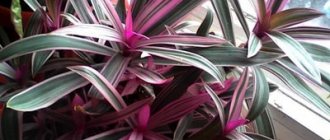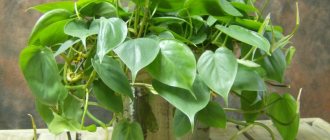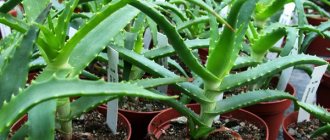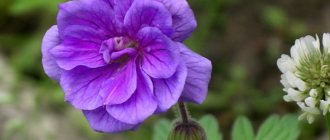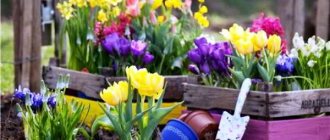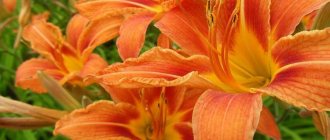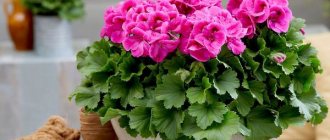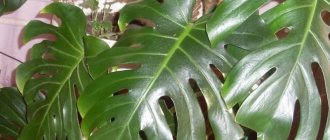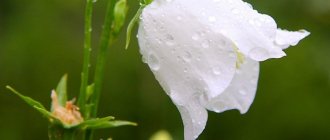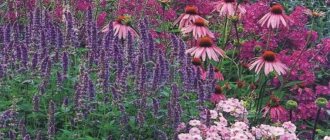Names and brief descriptions of indoor flowers with purple leaves
The unusual color of the leaves can be of various shades: from light lilac to deep purple. It can be uniform, can be located on both sides of the leaf at once, and there are options where this color is presented on one side - only on the top or bottom, while the other part remains the usual green. Purple on both sides are the well-known wood sorrel (night butterfly) with small triangle leaves, irezine (which needs a large amount of light to maintain the brightness of the color). The types of Herbst irezine and Purple Lady irezine are monochromatic.
Stromanta as a flower garden decoration
The upper side of the leaves is purple
Among the whole variety of indoor flowers, painted in this unusual, unusual shade only on top, the most popular is hemigraphis alternating. There are more than 100 species of this plant in nature. At home, ampel and semi-ampel forms are grown. It can be perennial or annual. The plant is whimsical, but looks very impressive.
Oxalis oxalis
With proper care, the ovoid, serrated leaves turn purple on top (its saturation changes depending on the lighting), while remaining light green on the reverse side.
Hemigraphis alternating
The underside of the leaves is purple
There are other plants with leaves that are purple only on the bottom. The most common among them:
- reo is the most popular plant, whose lower part of the leaves is purple in color. It attracts flower growers with its unusual appearance and lack of pickiness in care. In addition, reo also blooms beautifully;
- ginura. There are several varieties, but the most popular and unpretentious is the variety Ginura braided. This is an ampelous species with velvety leaves. The leaves are shaped like nettles, but have an unusual color in the lower part;
Reo during the flowering period
- purpusa. This is a close relative of Tradescantia, and therefore caring for it is quite problematic. It is a long vine. The leaves are olive-reddish in color and slightly hairy on top, and smooth and deep purple below.
Note! All plants in this group may change color slightly depending on the lighting.
Perennials
Purple flowers (photos with names confirm this) are a decoration of the garden. Perennials include plants whose life cycle is more than 2 years.
Ageratum Houston
Ageratum Houston grows up to 50 cm. It has small flowers collected in a fluffy basket, and the leaves are jagged, bright green.
Depending on the climate, it can be grown as an annual.
Muscari
Muscari (Muscari) is a beautiful small flower, otherwise known as viper onion and mouse hyacinth, grows up to 30 cm.
The inflorescence looks like a brush and smells pleasant. The plant is distinguished by germination from its own seeds throughout the season.
Lavender (Lavandula)
Lavender (Lavandula) is distinguished by a pleasant aroma and extraordinary delicacy of flowers, which are small bright spikelets.
They can reach 100 cm in height.
Clematis
Clematis is a vine and is very popular among gardeners. It is used to decorate gazebos and hedges. The flower is moisture-loving.
To care for the plant, mulching the bush is required.
Astra
Aster (Astra) belongs to the Asteraceae family. There are many types of perennial asters. All of them are beautiful and decorate the garden in the autumn.
There are types of flowers that bloom in May (Alpine), from July to September (Novobelgian, Peony, Italian), from September to October (Heather), from August to October (Large-leaved, Sedum-leaved) and others.
Houseplants with purple spots or stripes on leaves
Home flower with maple-like leaves - striped abutilon
Indoor flowers that have a heterogeneous color look very impressive: with spots or stripes, a marble shade. The most attractive of them:
- royal begonia. This is one of the leafy begonia hybrids, grown not to admire the lush inflorescences, but to enjoy the foliage of an unusual, spotted color all year round. The leaf part has an asymmetrical shape and reaches a length of up to 15 cm. The pattern is always bright, representing a complex pattern of green, purple, silver and burgundy colors. Royal begonia is a very fastidious plant that needs extra attention;
Royal begonia
- Zebra Purpusa. One of five types of zebrina suitable for growing at home. The leaves are oval-shaped with pointed edges and a pronounced striped color. The colors of the stripes are white with lilac-burgundy, which looks very unusual and attractive. Blooms with small lavender flowers;
- irezine Linden. This is a plant whose leaves are dark purple on top, with reddish stripes and veins.
Iresine Lindena
Everyone's favorite lilac
First of all, when you mention purple, you think of a gorgeous bush of fragrant lilac - the primary crop of all parks and gardens, characterized by colorful large inflorescences and talking about the arrival of spring with its warm days. The Twilight lilac variety will decorate any garden with purple-violet buds on tall bushes (about 4 meters), dark green leaves and a sparse spreading crown. The heady strong aroma will enchant you on spring evenings, and the luxurious flowering will delight you for about 3 weeks. Lilac varieties such as “Danton”, “Maksimovich”, “Mulatto”, “Lady Lindsay”, “President Poincaré”, “Charles Joly”, “Raj Kapoor” will decorate any garden because they have gorgeous purple flowers.
The photo conveys all the beauty of these gorgeous shrubs, loved by many gardeners.
House plants with purple flowers
Home maple abutilon - indoor flower
A purple home flower can delight not only with the color of its leaves, but also with its beautiful inflorescences. There are a lot of plants that bloom like this. The most popular among them are:
- Saintpaulia (Usambara violet). Violet is a name familiar to everyone; when you mention this word, you immediately think of a small plant with pubescent dark green leaves and medium-sized flowers. They have many species and hybrid varieties. In many types of violets, the flowers have a palette of colors from light lilac to deep purple; they can be simple or double;
- Gloxinia is an equally popular plant. Perennial, tuberous with original bell-shaped flowers. They are brightly colored inside, edged with a white stripe, and velvety to the touch;
- orchid. This plant is now at the peak of popularity. Large flowers of various shades are located on a tall thin trunk. The flowering period is long, the inflorescences are very elegant and unusual, similar to the wings of a butterfly. Lilac orchids are considered the most unpretentious and most resistant to disease.
Orchid flower
Varieties suitable for home cultivation
The following varieties of reo are most suitable for cultivation indoors:
- Reo discolor Vittata is a short representative of the genus with bright, yellow stripes on the leaves;
- Reo discolor Compacta is a violet-green specimen with excellent bushiness;
- Reo discolor Stripe in Pink is a very beautiful flower with an original color: the purple surface of the leaves is decorated with pink stripes on the upper side and the same, but with a purple tint, on the back side of the leaf.
Indoor flowers with purple stems
What is the name of an indoor flower with red leaves?
Flowers grown on a windowsill very often have purple “trunks”. There are representatives of home flora that have such original stems:
- Setcreasia purpurea. It belongs to the Tradescantia family, so it requires a lot of attention. It is grown as an ampelous and semi-ampelous plant. It is distinguished not only by completely purple leaves, but also by stems of the same color, as well as lilac small flowers. The shoots are long, growing up to 1 m;
- tradescantia violet. An interesting plant with fleshy purple stems and leaves that accumulate moisture, reaching 20 cm in length. Blooms with small pink flowers. Growth form: semi-ampelous or bushy;
- Columnae Sulfurea is one of the varieties of Columnae (there are about 200 in total), which, like other representatives of this species, has only a hanging variant of growth. Lianas reach up to 1 m in length. All columnae need long daylight hours and bright lighting. These factors ensure their flowering and fruiting. Columnae Sulfurea flowers are tubular and yellow. After flowering, white fruits form on the plant. The stems of this flower are reddish-purple, as is the lower part of the leaf.
Columnea Sulfurea
Purple indoor flowers can decorate any room and bring a little variety to every interior. And it doesn’t matter at all whether it will be painted in this color in whole or in part. The most important thing is effectiveness and unusualness. As a rule, such plants are not too picky, and all they need is as much sunlight as possible to make the color brighter.
Oxalis - an indoor miracle
Indoor compositions can be “violet” by a plant such as wood sorrel, called “clover of happiness” in Europe. According to legends, it attracts good luck to the house in which it grows. In this case, the following condition must be met: the wood sorrel must change its owner on the last day of the outgoing year. Therefore, on New Year's Eve, this plant with purple leaves is considered the best gift. It is the oxalis trefoil, symbolizing the Holy Trinity, that is the national symbol of Ireland, depicted on its coat of arms.
A characteristic feature of this unusual indoor plant is the folding and lowering of its leaves at nightfall or in cloudy weather. At the same time, it seems that the flower with purple leaves has turned into a flock of butterflies; This is why wood sorrel is also called “Madame Butterfly” and “butterfly flower”.
Zebrina is a houseplant characterized by oval leaves with a shiny surface, multi-colored at the top and purple underneath.
The violet-white flowers of the common violet will decorate any room in which it grows. This fabulously beautiful plant delights with its variety of shapes and shades. Violet is used for indoor growing. She also feels great in open ground, especially comfortable in the shade of trees.
Types and varieties of Tradescantia
There are about one hundred species and varieties of this plant. Let us introduce you to the most common ones.
White-flowered (Albiflora)
This species has long bending shoots that grow up to 50 cm. The leaves are large, ovoid-oval, monochromatic or painted with alternating stripes of white and pale green. The bottom of the leaf is slightly lighter than the top. The edges of the leaf blade are pointed. The surface is glossy. It blooms on the tops of the shoots with small flowers in the form of umbrellas of white or pale pink color.
This may be interesting: How to overcome the difficulties of caring for Poliscias
Varieties of white-flowered tradescantia:
Aurea - its yellow leaves are dotted with green stripes
Tricolor - its green leaf plate is decorated with stripes of white, pink and lilac colors
Albovittata - white stripes of different sizes run along the green background of the leaf
Striped or Zebrina
She is one of the most beloved among flower growers; without exaggeration, we can say - a real beauty! It has a strong stem up to 50 cm in height. The leaves are also long, up to 30 cm, their width is 5-6 cm. The color of the leaf below is unusually lilac-violet in color, and the top is covered with silver, purple and white longitudinal stripes. It blooms with purple or violet small flowers.
Blossfeldiana
This type of Tradescantia has dense, dark green, lanceolate-shaped leaves with a sharp tip and are quite large in size. The upper side of the leaf has a rich green color with a soft reddish tint. The lower part of the leaf is dark purple, with soft fibers. The stems of the plant are dense and have a burgundy-green sheath. They are also covered with lint. Three-petalled inflorescences of a delicate lilac color may appear in the axils of the leaves. The stamens and sepals are covered with long silvery fibers.
Scaphoid (Navicularis)
This is the most unusual type of indoor tradescantia. It has decorative creeping stems of a green-violet hue with raised tips and thick small leaves, reminiscent of a boat in shape. The leaves are arranged very tightly among themselves and are closely pressed against the shoots. The color of the leaf blades can be different: green, red or purple.
Riverside or Myrtle-leaved (Fluminensis)
Wild specimens of this type of Tradescantia have even green leaves. The flowers are white, small, with bright yellow stamens.
But, at home you can find plants with striped or even spotted leaves. Its shoots are thin, purple-red in color. The leaves are oval, bright green, small. On the underside they are lilac-violet.
Hairy (Sillamontana)
This is the only type of Tradescantia that can live in dry conditions due to the fact that its stems and leaves are covered with long whitish hairs that help accumulate and retain moisture, protecting the plant from loss of it. The shoots grow vertically, but droop with age.
In the summer, single pink flowers with a lilac tint form on the tops of the shoots of Tradescantia Sillamontana.
The species cannot live in cold conditions, so in winter it must be kept in a warm room.
This may be interesting: Guzmania (Guzmania) - description, types and varieties
Virgin (Virginiana)
This species is characterized by straight, branched shoots up to 50-60 cm in length. The leaves are lanceolate, 20 cm long and 4 cm wide. Their base is covered with thin, soft fibers. In mid-summer it blooms with purple or pink flowers that form dense umbrella inflorescences. Flowering lasts about 2 months.
This species can be grown in garden plots as a beautiful flowering perennial, as it is very hardy and tolerates winter well.
Varieties of Virginia Tradescantia differ in different shades of petals:
Rubra
Atrorubra
Caerulea
Rosea
Andersona
This species includes hybrids bred by breeders based on Tradescantia virginiana. They have well-branched straight stems, reaching 80 cm, on which voluminous, slightly elongated leaves grow. Tradescantia blooms all summer long with flowers with flat three petals in blue, white, pink or purple shades.
Its most famous varieties:
Iris – with flowers of intense blue tone
"Osprey" - with snow-white flowers
Purple (Pallida Purpurea)
This species has fairly branched stems of a deep purple hue. The leaf blades are the same purple, their lower part is covered with pile. The flowers are small, three-petaled, delicate crimson or pink. During flowering, its bright purple leaves are made even more beautiful by the large number of light pink flowers.
Small-leaved (Callisia)
This decorative species is cultivated exclusively for indoor cultivation. Its thin brownish-purple shoots are abundantly covered with tiny smooth leaves - dark green on top and purple on the back.
Bedspreada (Spathacea)
This species is distinguished by an erect shoot, around which a strong rosette of lanceolate-shaped leaf plates is formed. The surface of the leaf plate is glossy, green on the front side and pinkish-violet on the back. The flowering period is short. The flowers are small and white. They form under a blanket that looks like a boat. This feature gave the species another name - “Boat of Moses”.
Lodges
This species is native to Australia. It differs from other relatives in that it does not develop long shoots. The leaves are large, olive green in color with a silver stripe in the middle. The shape of the leaves resembles an elongated oval and forms a rosette at the bottom.
